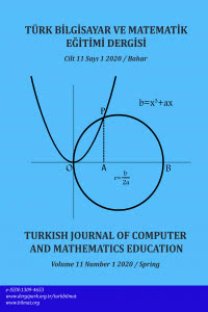Uzaktan Eğitimde Öğretim Yönetim Sistemi ve Senkron Eğitim Platformu Tasarim Süreci: KTÜ Örneği
Üniversitelerin uzaktan eğitim uygulamalarında, kendi özelliklerini yansıtacak ve gereksinimlerini karşılayabilecek, orta ve uzun vadede doğacak teknolojik yeniliklere hızla uyum sağlayabilecek özgün öğrenim yönetim sistemlerine (ÖYS) ve bu sisteme entegre edilmiş senkron eğitim olanaklarına sahip olması gerekmektedir. Bu çalışma uzaktan eğitim sistemi geliştirme sürecinde yaşananlara dikkat çekerek, böyle bir sistem tasarımı sırasında nelere dikkat edilmesi gerektiği, süreç içerisinde yaşanabilecek sıkıntılar ve bu sıkıntılara ilişkin çözüm önerilerinin neler olabileceği konularına ışık tutmayı amaçlamaktadır. Veri toplamak için doküman ve gözlemlerden yararlanılmıştır. Araştırmaya katılan öğrencilerin sistem tasarım sürecindeki yaşantılarını yansıtan günlükleri, doküman analizi tekniği ile incelenmiştir. ÖYS tasarım sürecinde önemli olan farklı niteliklerde uzman kişileri bir araya getirerek bir bütünlük oluşturabilmektir. Bunun yanında ÖYS problem çözme yaklaşımı içerisinde dinamik bir süreç olarak tasarlayabilmek de önemlidir.Anahtar kelimeler: Uzaktan eğitim, öğrenim yönetim sistemi tasarımı
Anahtar Kelimeler:
-
Learning Management System In Distance Learning And Design Process Of A Synchronous Learning Platform: Case of Karadeniz Technical University
The fact that web based distance learning concept has recently gained more and more significance has required the establishment of virtual campuses at universities and the provision of synchronous and asynchronous education facilities to be used in these campuses. While applying distance learning methods, the universities should adopt genuine learning management systems that could reflect their own characteristics and meet their own needs which are also adaptable to mid and long-term technological changes. The universities should also have synchronous education facilities integrated to the system.1. MethodologyAs is required by the nature of the research problem itself, this study bears a qualitative feature. “Action research”, which is one of the qualitative research approaches has been used in this study. Documents and observations have been used as data collection instruments. The diaries of the students who participated to the research during the design of the system have been analysed using document analysis technique. The research has been conducted with the participation of 14 M.A. students from Karadeniz Technical University, Fatih Faculty of Education, Department of Computer and Instructional Technologies during 2008-2009 spring term. During the research students‟ individual diaries, have been coded and qualitatively analysed. The results of the qualitative analysis indicate similar and different cases experienced by two different students groups during the study.2. System Design ProcessIt has turned out that specific software with synchronous and asynchronous features should be employed in order to ensure effective use of the present distance learning system. The preparation of synchronous and asynchronous chapters has required different coding and design features therefore two different groups have been formed.The synchronous and asynchronous working groups have made a literature review regarding their own fields of study. The structure of Learning Management System (LMS) has been investigated by the asynchronous working group. A needs analysis has been conducted so as to determine the features of the system to be designed later throughout the process. In the light of the data achieved, the minimum software knowledge to be possessed by the members of the group has been defined. Following the literature review, the synchronous working group has examined the structure of the synchronous interfaces used in the existing distance learning systems. The characteristics of these systems as well as their capabilities were then determined.3. FindingsWithin the framework of this research, the findings achieved from the logs (diaries) of the participants reflect their experiences both before and during the design process of the distance learning system. As a result of the qualitative analysis, through the study processes themes such as „preparedness, expectations, preparations, problems, solutions and recommendations‟ have been formed.4. Conclusion and RecommendationsThe most important criteria for achieving success in designing a distance learning system is to conduct a good analysis of situation, elucidate the differences between current state and requirements conduct a group work for finding solutions for determined defeicincies. Despite the fact that a needs analysis has been conducted and the operation plan of the system has been prepared prior to the design of the system. However, the participants still encounter some problems during the process. This is because any study conducted prior to the design of such complicated systems only contribute to the formation of the infrastructure of the system and thus be beneficial for the participants. Not only the synchronic level but also the platform through which the system shall be supported is also very important while designing the system. Therefore, it is very crucial at this point that the LMS is designed as a dynamic one. Distance learning systems are formed either using the synchronous and asynchronous systems individually or in an integrated form. The system has been planned as a web based LMS enabling synchronous and asynchronous education, thus paving the way for an effective education environment. Such studies should be elaborated in detail considering the service requirements of the relevant organization, should be subject to a sound needs analysis and performed within a convenient time period with the participation of a professional team.
Keywords:
-,
- Başlangıç: 2009
- Yayıncı: Türkbilmat Eğitim Hizmetleri
Sayıdaki Diğer Makaleler
Adnan Baki, Hatice Yalçınkaya, İlknur Özpınar, Selcen Uzun
Öğrenme Nesnelerine Dayalı Bir Öğrenme Ortamının Farklı Açılardan Değerlendirilmesi
Ünal Çakıroğlu, Adnan Baki, Yaşar Akkan
Uzaktan Eğitimde Öğretim Yönetim Sistemi ve Senkron Eğitim Platformu Tasarim Süreci: KTÜ Örneği
Adnan Baki, Hasan Karal, Ayça Çebi, Lokman Şılbır, Memnune PEKŞEN
Ali Türkdoğan, Adnan Baki, Salih Çepni
VQ Yöntemiyle KonuĢmacı Cinsiyetinin Belirlenmesi
Çevrimiçi Uzaktan Eğitim Ortamında Topluluk Hissi Ölçeği Geliştirme Çalışması
